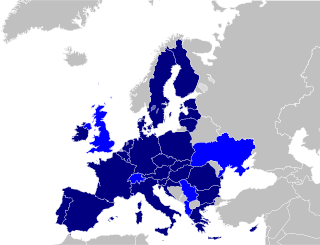 W
W116 000 is the European missing children hotline number. It was the first harmonised service of social value to be adopted by the European Union. The 116 000 hotline provides free, immediate life saving support when children go missing.
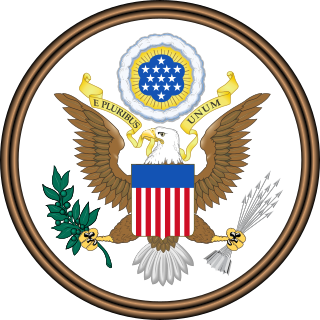 W
WThe Adam Walsh Child Protection and Safety Act is a federal statute that was signed into law by U.S. President George W. Bush on July 27, 2006. The Walsh Act organizes sex offenders into three tiers according to the crime committed, and mandates that Tier 3 offenders update their whereabouts every three months with lifetime registration requirements. Tier 2 offenders must update their whereabouts every six months with 25 years of registration, and Tier 1 offenders must update their whereabouts every year with 15 years of registration. Failure to register and update information is a felony under the law. States are required to publicly disclose information of Tier 2 and Tier 3 offenders, at minimum. It also contains civil commitment provisions for sexually dangerous people.
 W
WAn Amber Alert or a child abduction emergency alert is a message distributed by a child abduction alert system to ask the public for help in finding abducted children. It originated in the United States in 1996.
 W
WA baby gate or child safety gate is a protective barrier designed to prevent babies and toddlers from accessing areas of a home where they might be unsafe, such as stairways and kitchens. Baby gates are typically constructed of metal, plastic and/or wood, and can be expanded to fit in a range of doorway widths. They may be designed for use indoors or out, and may be either hardware or pressure-mounted.
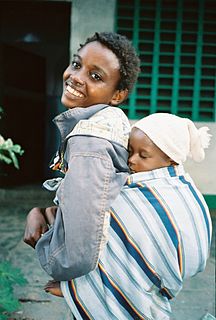 W
WA baby sling or baby carrier is a piece of cloth that supports an infant or other small child from a carer's body. The use of a baby sling is called babywearing.
 W
WVarious methods of transporting children have been used in different cultures and times. These methods include baby carriages, infant car seats, portable bassinets (carrycots), strollers (pushchairs), slings, backpacks, baskets and bicycle carriers.
 W
WBabywearing is the practice of wearing or carrying a baby in a sling or in another form of carrier. Babywearing has been practiced for centuries around the world. In the industrialized world, babywearing has gained popularity in recent decades. Part of the reason for this shift is due to the influence of advocates of attachment parenting. Babywearing is a form of baby transport which can be enjoyed for as long as mutually desired, often until toddlerhood and beyond.
 W
WThe Block Parent Program (French: Le Programme Parents-Secours) is a large, volunteer-based, child safety and crime prevention program operating across Canada. Participants in the program place signs on their homes indicating that the house is a police-screened, safe home for community members in distress, particularly children. If someone is in need of help and sees a block parent sign, they know there is someone home who can help them and call the appropriate emergency service if necessary.
 W
WAs a result of its high level of immigration and emigration and its status as common source and destination for a large amount of international travel the United States has more incoming and outgoing international child abductions per year than any other country. To address this issue the United States played an active role in the drafting of the 1980 Hague Convention on the Civil Aspects of International Child Abduction Although the United States was one of the first nations to sign the Convention in 1981 the Convention did not enter into force for the US until 1988 with the enactment by Congress of the International Child Abduction Remedies Act which translated the Convention into US law.
 W
WThe Child Act 2001 is a Malaysian law which served to consolidate the Juvenile Courts Act 1947 [Act 90], the Women and Girls Protection Act 1973 [Act 106], and the Child Protection Act 1991 [Act 468]. It was enacted partially in order to fulfil Malaysia's obligations under the United Nations Convention on the Rights of the Child. However, it retains the option of corporal punishment for child offenders. In December 2004, members of the legal community suggested that the law needed review, despite its newness, in order to clarify its criminal procedures. One example of the Act's unclarity was brought to light in a 2007 case involving a 13-year-old convicted of murder. Under Section 97(1) of the Act, capital punishment may not be applied to children; Sections 97(2), 97(3), and 97(4) make provisions for alternative punishments for offences which would result in the death penalty if committed by adults, namely detention at the pleasure of the Yang di-Pertuan Agong. However, Section 97(2) was overturned by the Court of Appeal in July 2007 on the grounds that it violated the Constitution of Malaysia's doctrine of separation of powers, leading to the situation that no punishment at all could be rendered.
 W
WA child harness is a safety device worn by children when walking with a parent or carer. Child harnesses are most commonly used with toddlers and children of preschool age, though they may also be used with older children, especially if they have special supervisory needs such as ADHD or autism. Typically, a harness consists of waist, shoulder and sometimes crotch straps with a lead (tether) or rein attaching behind. However, a simpler version consisting of a single strap connecting the child's wrist or waist to an adult is also common.
 W
WThe Child Online Protection Act (COPA) was a law in the United States of America, passed in 1998 with the declared purpose of restricting access by minors to any material defined as harmful to such minors on the Internet. The law, however, never took effect, as three separate rounds of litigation led to a permanent injunction against the law in 2009.
 W
WChild-resistant packaging or CR packaging is special packaging used to reduce the risk of children ingesting hazardous materials. This is often accomplished by the use of a special safety cap. It is required by regulation for prescription drugs, over-the-counter medications, Nicotine Containing Electronic Cigarette devices or Refill containers that can contain Nicotine EUTPD 36.7 pesticides, and household chemicals. In some jurisdictions, unit packaging such as blister packs is also regulated for child safety.
 W
WChildproofing is the act of making an environment or object safe for children. This reduces risks to a level considered acceptable by a society, an institution, or to specific parents. Childproofing may include restriction of children to safe areas or preventing children from reaching unsafe areas. This can be accomplished by the parent or by hiring a professional for assistance. Childproofing is gaining more prominence now that parents have greater access to information on child injury and a wide variety of products are available to help prevent it. It has become so top-of-mind for parents that even hotels and child-friendly resorts are offering "child-proof" rooms.
 W
WA Children's bicycle seat is a saddle that is designed to be put on a bicycle for children to be transported in. The most common place for child bicycle seats are in the rear of the bicycle.
 W
WThe Children's Internet Protection Act (CIPA) is one of a number of bills that the United States Congress proposed to limit children's exposure to pornography and explicit content online.
 W
WThe Children's Online Privacy Protection Act of 1998 (COPPA) is a United States federal law, located at 15 U.S.C. §§ 6501–6506.
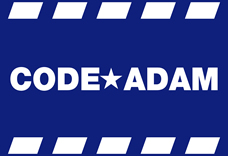 W
WCode Adam is a missing-child safety program in the United States and Canada, originally created by Walmart retail stores in 1994. This type of alert is generally regarded as having been named in memory of Adam Walsh, the 6-year-old son of John Walsh.
 W
WOriginally conceived in 1989, the Constable Care Child Safety Foundation is a not for profit community organisation working in partnership with the Western Australia Police, to educate children and young people in primary and secondary schools across the State about safety, crime prevention, ethics and good decision making. Constable Care is a nationally registered harm prevention charity and utilises theatre-in-education, and in particular applied theatre, to deliver its education messages.
 W
WCradleboards are traditional protective baby-carriers used by many indigenous cultures in North America and throughout northern Scandinavia amongst the Sámi. There are a variety of styles of cradleboard, reflecting the diverse artisan practises of indigenous cultures. Some indigenous communities in North America still use cradleboards.
 W
W"Do you know where your children are?" is a question used as a public service announcement (PSA) for parents on American television especially from the late 1960s through the late 1980s. Accompanied by a time announcement, this phrase is typically used as a direct introduction for the originating station's late-evening newscast, typically at either 10:00 p.m. or 11:00 p.m. While the phrase itself had appeared in newspapers as early as the 19th century, usage of it in broadcasting started in the early 1960s following the enactment of nightly youth curfews for minors in multiple large cities.
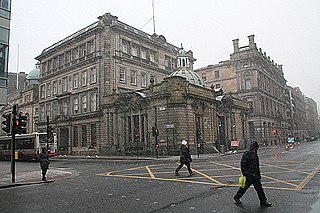 W
WThe Green Cross Code is a brand created by the National Road Safety Committee to raise awareness of pedestrian road safety in the United Kingdom. The multimedia Green Cross Code campaign began in 1970 and continues today.
 W
WAn infant bed is a small bed especially for infants and very young children. Infant beds are a historically recent development intended to contain a child capable of standing. The cage-like design of infant beds restricts the child to the bed. Between one and two years of age, children are able to climb out and are moved to a toddler bed to prevent an injurious fall while escaping the bed.
 W
WLiza Alert is a nonprofit search-and-rescue volunteer organization to search for missing people. It is also known as the Liza Alert search-and-rescue team.
 W
WThe National Center for Missing & Exploited Children (NCMEC) is a private, nonprofit organization established in 1984 by the United States Congress. In September 2013, the United States House of Representatives, United States Senate, and the President of the United States reauthorized the allocation of $40 million in funding for the National Center for Missing & Exploited Children as part of Missing Children's Assistance Reauthorization Act of 2013. The current chair of the organization is child safety advocate Patty Wetterling, mother of Jacob Wetterling. NCMEC handles cases of missing or exploited children from infancy to young adults through age 20.
 W
WThe National Child Passenger Safety Board, managed by the National Safety Council, maintains the quality and integrity of the National Child Passenger Safety Certification Training Program in the United States. The program is used to train and certify child passenger safety technicians and instructors in order to assist caregivers in safe transportation of children. Three of the most common issues that put children at risk: improperly used or installed safety seats, hot cars, and teen drivers. The Board is not limited to keeping kids safe in cars in the U.S. The work of Dr. Marilyn J. Bull to help shape automobile safety law in Chile was highlighted in March 2017 by AAP News.
 W
WNational Safe Place is a non-profit organization based out of Louisville, Kentucky. It originated in 1983 from an initiative known as "Project Safe Place", established by a short-term residential and counseling center for youth 12 to 17. The organization is intended to provide access to immediate help and support for children and adolescents who are "at risk" or in crisis situations. The purpose is to both defuse a potential crisis situation as well as provide immediate counsel and support so the child in crisis may be directed to an appropriate shelter or accredited care facility.
 W
WThe Office of Children's Issues is an agency of the Bureau of Consular Affairs, which in turn is part of the U.S. Department of State. The Office of Children's Issues was created in 1994 under the leadership of Assistant Secretary of State for Consular Affairs Mary Ryan and that of her successor Maura Harty. The Office of Children's Issues develops and coordinates policies and programs related to international child abduction. In this respect, it is the U.S. Central Authority under the terms of the Hague Convention on the Civil Aspects of International Child Abduction and the Hague Convention on Protection of Children and Co-operation in Respect of Intercountry Adoption.
 W
WA papoose is an American English loanword whose present meaning is "a Native American child" or, even more generally, any child, usually used as a term of endearment, often in the context of the child's mother. The word came originally from the Narragansett tribe, just one of the current 573 federally recognized tribes. In 1643, Roger Williams recorded the word in his A Key Into the Language of America, helping to popularize it.
 W
WA playpen is a piece of furniture in which an infant or young toddler is placed to prevent self-harm when her/his parent or guardian is occupied or away. The earliest use of the word "playpen" cited in the Oxford English Dictionary is 1902.
 W
WA swimming pool fence is a type of fence placed around swimming pools, to create a passive barrier to restrict the access of small children, 0–5 years to the swimming pool. Swimming pool fences must have a self-closing and self-latching gate/s to be compliant to most countries' laws and codes.
 W
WThe Safety House Program was a national Australian community based and funded program designed for the safety of children while in transit to and from school. Houses and businesses were selected as safe places for children to seek shelter and safety if required. Applicants had to undergo criminal history checks and other checks by the organisation.
 W
WSafetyville, USA is a miniature city that sits on a little over 3 acres of land in Sacramento, California. It is a program that was designed to provide safety education to young children in an interactive manner. The miniature town is complete with tiny versions of the California State Capitol building, municipal building, business buildings, and various streets in Sacramento, California.
 W
WA school bus crossing arm is a safety device intended to protect children from being struck while crossing in front of a school bus. Typically, school bus crossing arms are wire or plastic devices which extend from the front bumper on the right side of the bus when the door is open for loading/unloading and form a barrier. The devices force children, who need to cross the road, to stand several feet in front of the bus itself before they can begin to cross the road. This ensures that the bus driver can see them as they cross, avoiding a common blind spot immediately in front of the bus, closest to the bumper. The crossing arm retracts flush against the bumper while not activated, such as when the bus is in motion.
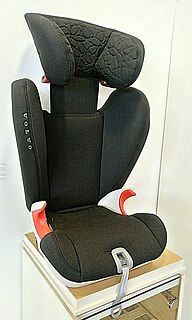 W
WA child safety seat, sometimes called a infant safety seat, child restraint system, child seat, baby seat, car seat, or a booster seat, is a seat designed specifically to protect children from injury or death during vehicle collisions. Most commonly these seats are purchased and installed by car owners, but car manufacturers may integrate them directly into their vehicle's design and generally are required to provide anchors and ensure seat belt compatibility. Many jurisdictions require children defined by age, weight, and/or height to use a government-approved child safety seat when riding in a vehicle. Child safety seats provide passive restraints and must be properly used to be effective. However, research indicates that many child safety restraints are often not installed or used properly. To tackle this negative trend, health officials and child safety experts produce child safety videos to teach proper car seat installation to parents and caregivers.
 W
WSioux City & Pacific Railroad Co. v. Stout, 84 U.S. 657 (1873), was a case decided by the Supreme Court of the United States that first enunciated the idea that a landowner could be liable for the injuries of a child trespasser.
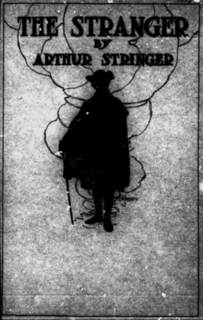 W
WA stranger is a person who is unknown to another person or group. Because of this unknown status, a stranger may be perceived as a threat until their identity and character can be ascertained. Different classes of strangers have been identified for social science purposes, and the tendency for strangers and foreigners to overlap has been examined.
 W
WInfant swimming is the phenomenon of human babies and toddlers reflexively moving themselves through water and changing their rate of respiration and heart rate in response to being submerged. The slowing of heart rate and breathing is called the bradycardic response. It is not true that babies are born with the ability to swim, though they have primitive reflexes that make it look like they are. Babies are not old enough to hold their breath intentionally or strong enough to keep their head above water, and cannot swim unassisted.
 W
WA walking bus is a form of student transport for schoolchildren who, chaperoned typically by two adults, walk to school along a set route, with some similarities to a school bus route. Like a real bus, walking buses have a fixed route with designated "bus stops" and "pick up times" at which they pick up and "drop off" children.
 W
WWalkodile is a child safety device consisting of "a flexible plasic spine and safety belts" to keep groups of six young children together while on walks outside of their school or nursery/kindergarten.